Ayoob: What Is a Cross-Dominant Shooter?
November 5th, 2023
5 minute read
Many shooters are cross-dominant, that is, their dominant hand is on the side opposite their master eye. According to ophthalmologist Steven Shanbom, “65 percent of people have a dominant eye that is the same as their dominant hand. That is, if they’re right-handed, their dominant eye is their right eye (or left eye if they’re left-handed). 18 percent of people are cross dominant, with their dominant eye different from their dominant hand. Interestingly, 17 percent of people have no identifiable dominant eye.”
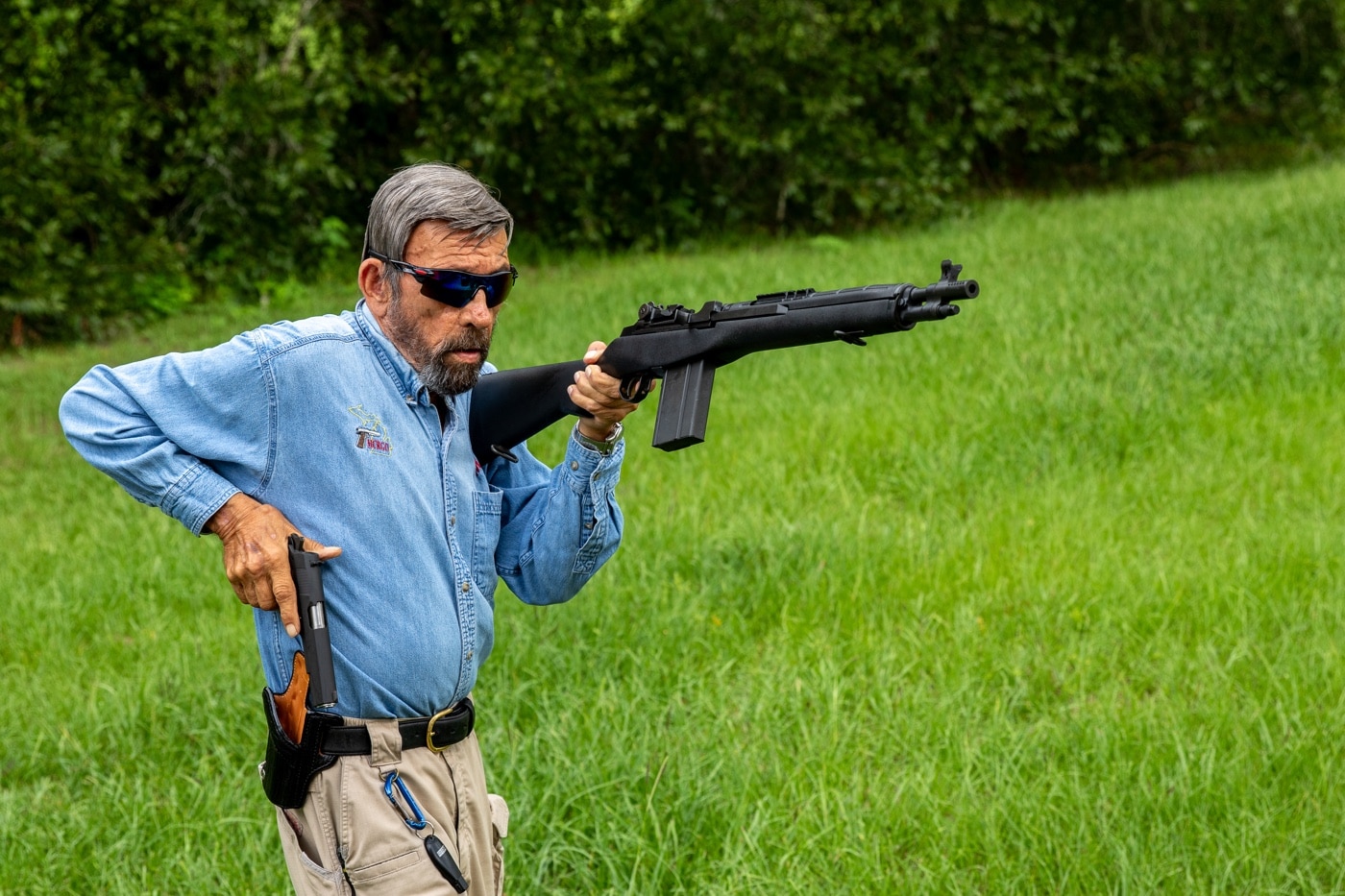
Altogether too many instructors have treated this situation as a birth defect, requiring the rather radical treatment of putting the less-dexterous hand on the trigger. This works better with long gun than with handgun.
[Be sure to read: How to Determine Eye Dominance.]
Cross Dominant Shooting with a Long Gun
With rifle or shotgun, shooting from the dominant eye side makes huge sense. The non-dominant (less dexterous) hand is now working the trigger, true enough, but with the long gun the trigger pull is probably less than the weight of the gun and surgical finesse is not required; indeed, clay bird shooters are taught to slap the triggers of their shotguns. Now the stronger of the two upper limbs is out in front supporting and steadying the weight of the long gun. The stronger limb can probably function a slide action faster with less likelihood of a short-stroke once that hand is habituated to the task. It makes sense to use the dominant arm up front to track moving targets or between multiple targets.
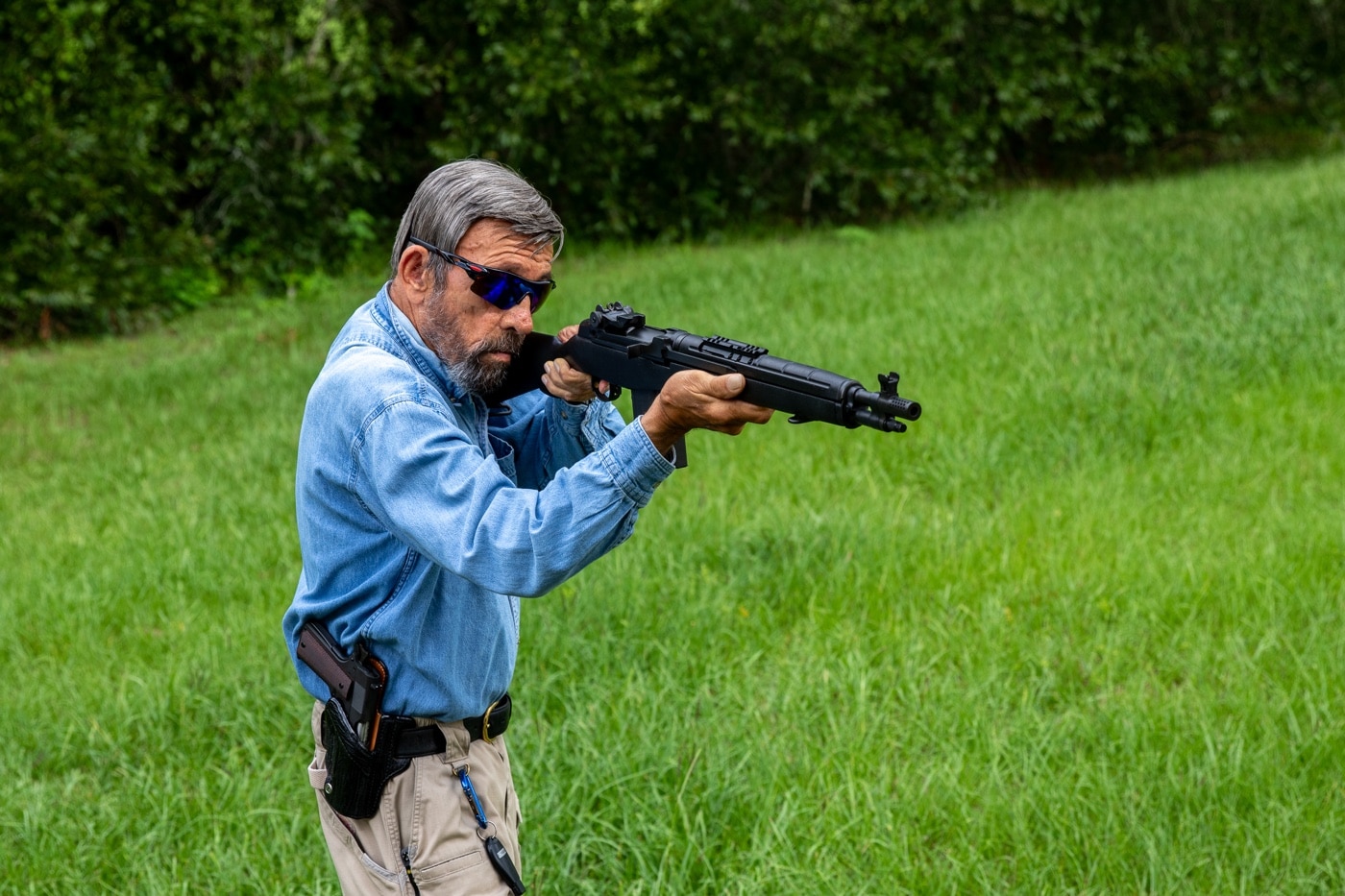
With the long gun, the cross-dominant right-handed shooter firing from the left shoulder in line with the dominant left eye may actually have an advantage over their same-side-dominant counterpart.
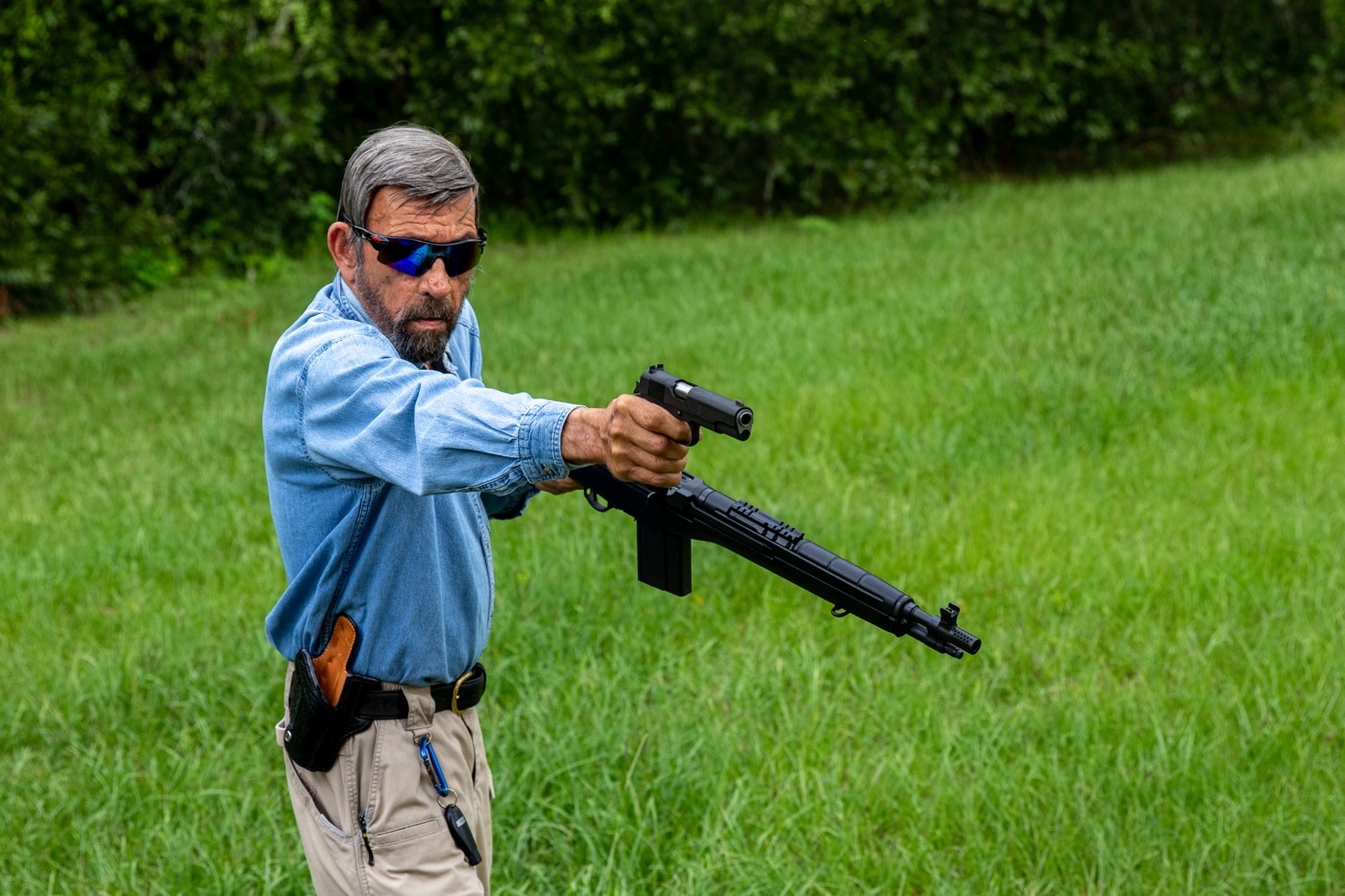
In defensive training where the transition from long gun to handgun is generally accepted to be an important skill, the cross-dominant long gunner shooting from the “weak side” shoulder with carbine or scattergun but wearing the handgun on the “strong side” hip has the fastest of all possible transitions. He or she simply straightens their trigger finger on the long gun and executes a “strong-hand only” draw to the shot without even removing the long gun from the shoulder. (If the long gun is too heavy for that, the shooter can quickly tuck the comb of the stock into the armpit to stabilize it one-handed.)
Cross Dominance and the Handgun
Attempting to train the non-dominant eye to take over is a laborious task that may or may not work. Occluding the master eye to force the non-dominant eye to aim is artificial, and blocks half of the shooter’s vision at what may be the worst possible time. It is much easier and, in my opinion, more effective to simply adapt the shooter’s stance and keep the dominant hand running the pistol.
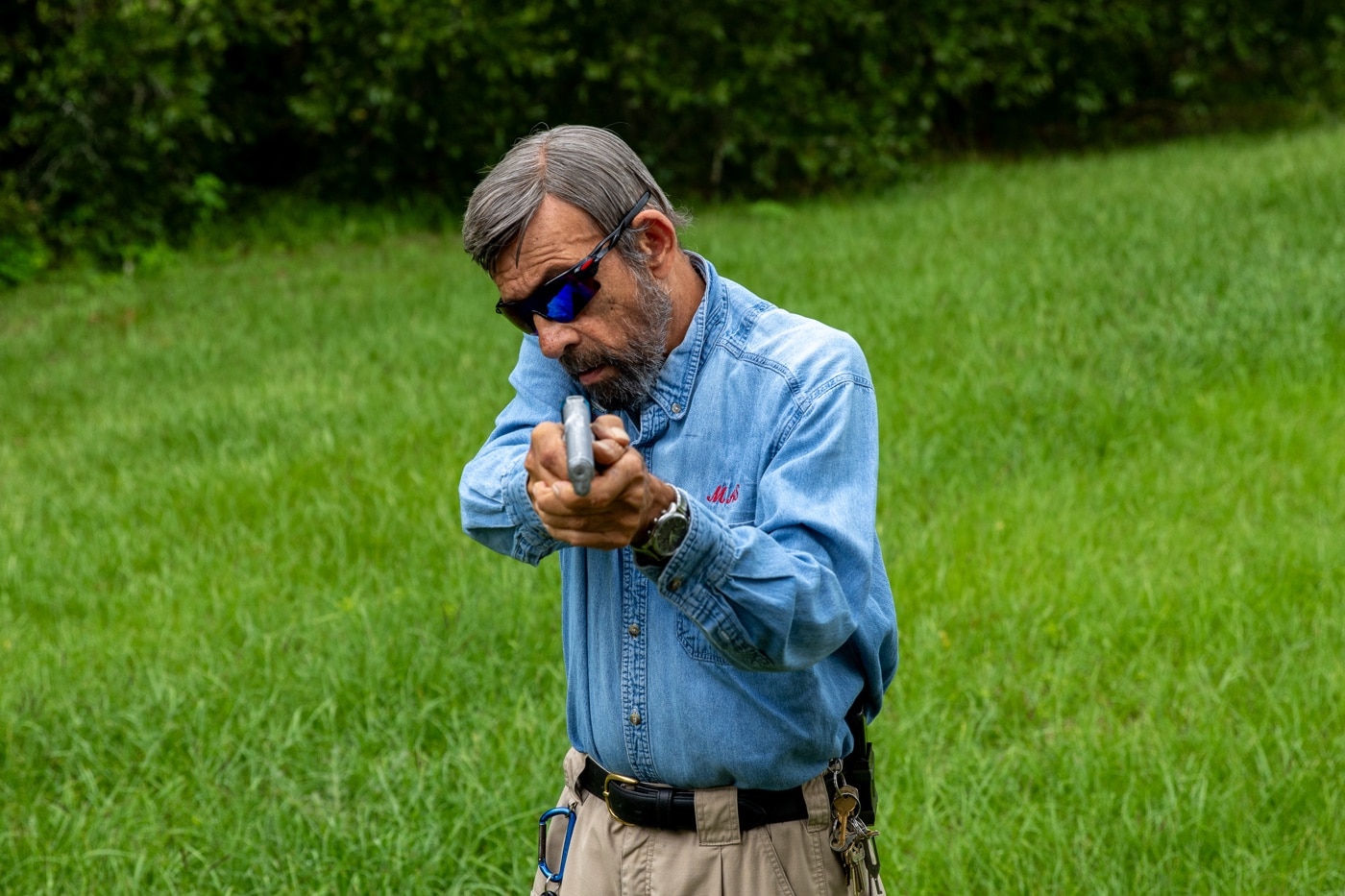
In the Classic Weaver stance, the body is somewhat bladed toward the target or threat and both arms are bent, employing isometric pressure with the gun hand pushing forward and the support hand pulling back with equal and opposite force. By simply dropping the head to the gun-side shoulder, the left eye will align with the right hand or vice versa.
In the Chapman modification of the Weaver stance, the support arm is bent and pulled back toward the shooter with dynamic tension, while the gun arm is locked straight out. The cross-dominant correction is easier here: with the head straight up “on a swivel,” bring the chin or jawline to the bicep of the shooting arm and left eye coordinates perfectly with the extended right hand. Again, it’s a mirror image for southpaws.
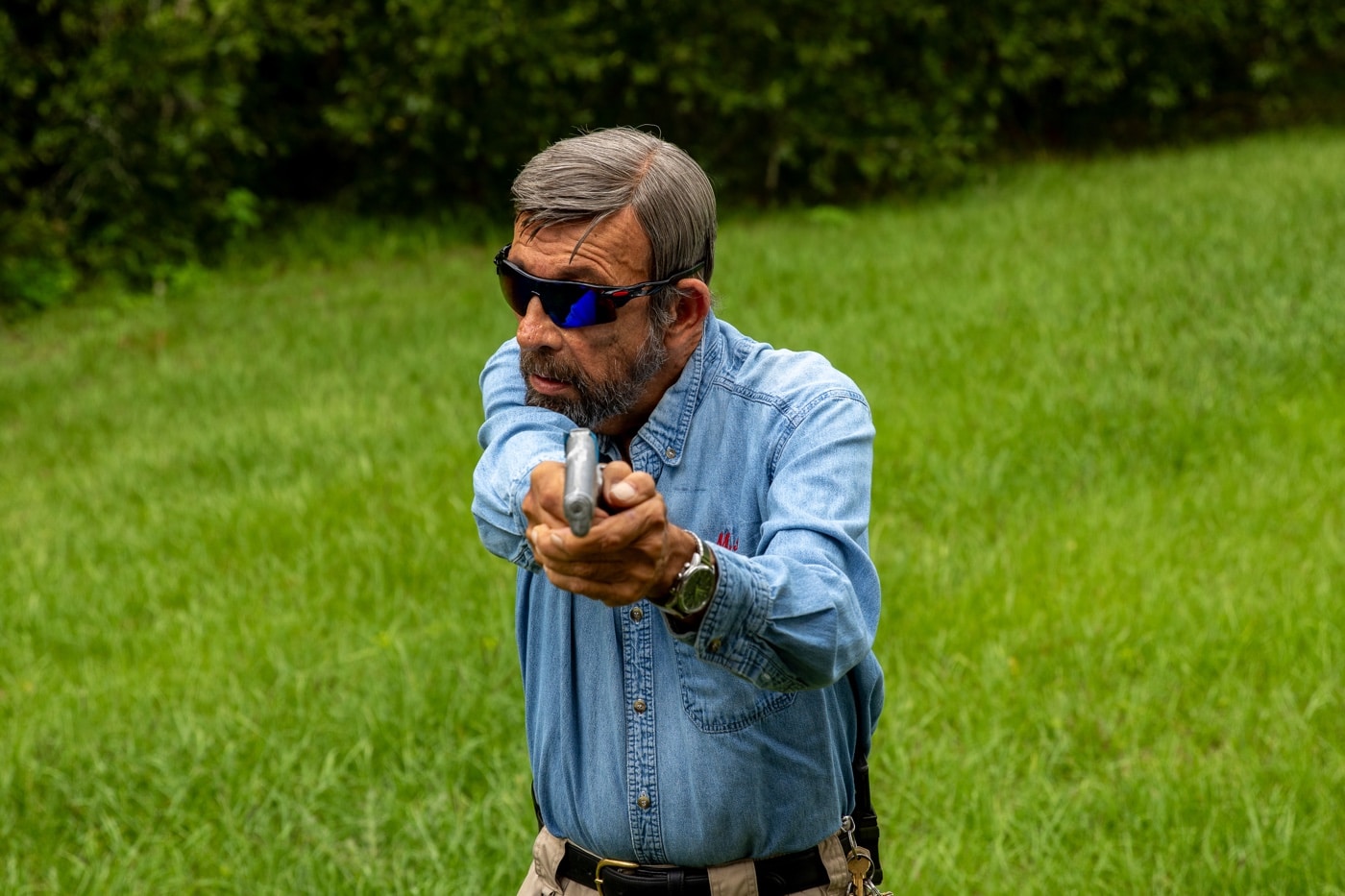
In the isosceles stance the chest is square to target or threat, and the arms extended to equal distance. This brings the gun to the centerline of the body and head. Thus, it is about as easy for one eye as the other to find the sights; the isosceles is probably the most natural stance for the cross-dominant handgunner.
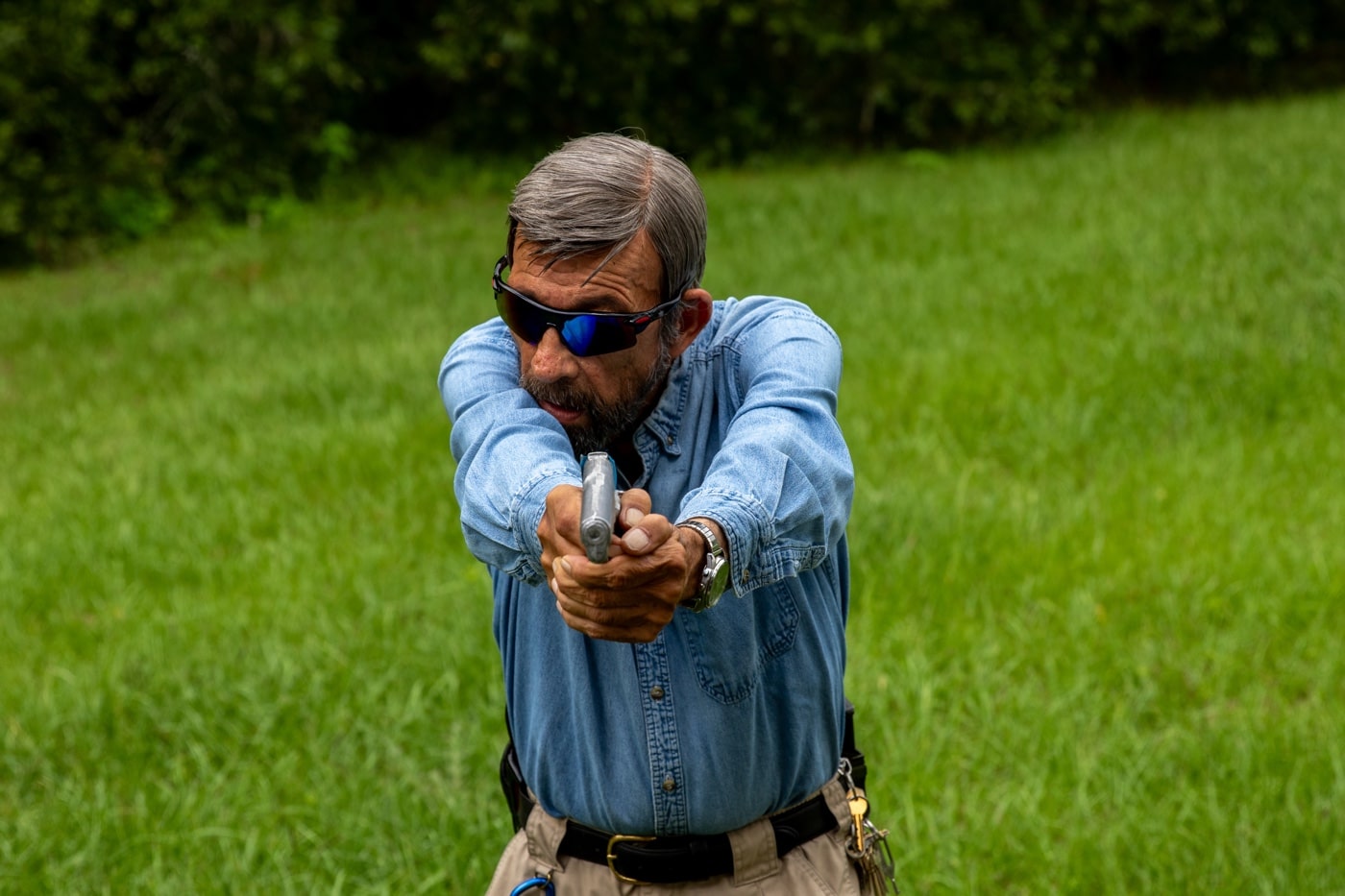
All of the above are two-handed techniques. For one-handed shooting, the best technique I’ve seen for the cross-dominant shooter was developed circa 1960 by Bill McMillan of the USMC pistol team, and popularized by his contemporary Ray Chapman, the first World Champion of the Combat Pistol. The gun arm is locked straight out to the target and the gun hand rotates 15 to 45 degrees inboard toward the cross-dominant eye. Without turning the head, the right-handed shooter finds the sights directly in line with the pupil of the left eye; again, vice versa for the left-handed shooter. This grasp also, for most people, tightens the hand slightly, to the point where some experienced handgunners use it even with the hand on the dominant eye side.
Conclusion
Many great shooters have been cross-dominant. World champion David Sevigny, for example, and former national IDPA champion Tom Yost. Both my daughters are cross-dominant, and both won national pistol titles in their teens.
It’s simply a matter of adaptation.
Editor’s Note: Please be sure to check out The Armory Life Forum, where you can comment about our daily articles, as well as just talk guns and gear. Click the “Go To Forum Thread” link below to jump in and discuss this article and much more!
Join the Discussion
Continue Reading
Did you enjoy this article?

 79
79






